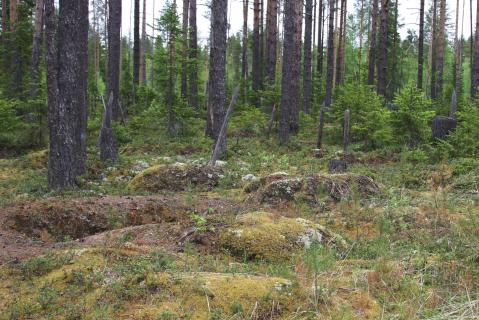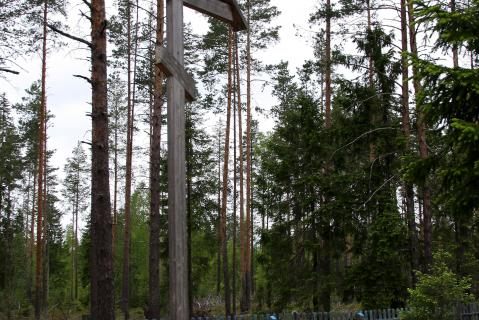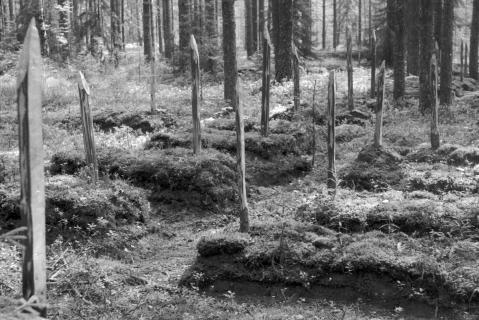In the 1940s prisoners of the Sevdvinlag camps who died in the infirmary 3 kms away were buried here. The burial site was first discovered and investigated in 1989 by the explorers’ group from Velsk “In the Name of the Fallen”. They fenced off the cemetery with barbed wire and place a fir stake on each discovered burial. In the early 1990s they were able to prevent the development of a quarry on the site of the cemetery.
Since 2004 the “Vazhsky krai” inter-regional movement (Kuloi settlement) has been in charge of the cemetery. Its activists have cleared the territory and surrounded it with a wooden fence and a 7-metre-high memorial cross has been erected there. Every year, with the support of local businessmen, the activists of the Vazhsky krai movement organise voluntary workdays to keep the cemetery tidy.
The Memorial online database (2025) lists 72,325 victims in the Arkhangelsk Region (BR 15,944). See Severodvinsk.
From other sources the database lists 1,896 victims sent to the Arkhangelsk Region: some to the camps, most to its special settlements (1,301). It names 40 prisoners who were held in Sevdvinlag, 21 of whom died there. (And see The Gulag in Northwest Russia, 1931-1960.)
| Date | Nature of ceremonies | Organiser or responsible person | Participants | Frequency |
|---|---|---|---|---|
|
30 October
|
Remembrance Day for the Victims of Political Repression
|
"Vazhsky krai" inter-regional movement
|
"Vazhsky krai" inter-regional movement
|
Annual event
|
| State of burials | Area | Boundaries |
|---|---|---|
|
Subsidence over burials; burial mounds, burials marked by stakes
|
not determined
|
not delineated
|
[ original texts and hyperlinks ]
“The forest burial ground of Sevdvinlag inmates”, Velsk-Info, 2 August 2006, No 31
“A common grave in the woods”, Velsk-Info, 1 November 2006, No 52
“The malevolent shadows of the past have returned to Putin’s Russia”, Velsk-Info, 2 November 2011, No 44 (1098) [retrieved 27 May 2022; no longer accessible, August 2025]
“The tears of commemorative candles and sorrow in the forest cemetery of Sevdvinlag prisoners”, Velsk-Info, 31 October 2012, No 44 (1150) [retrieved 27 May 2022; no longer accessible, August 2025]
*
“Sevdvinlag prisoners’ cemetery near Priluk village”, Virtual Museum of the Gulag [retrieved 27 May 2022; no longer accessible, August 2025]
Reply from the Velsk district administration (№ 01-40/1434 of 09 April 2014) to a formal enquiry by RIC Memorial (St Petersburg)



